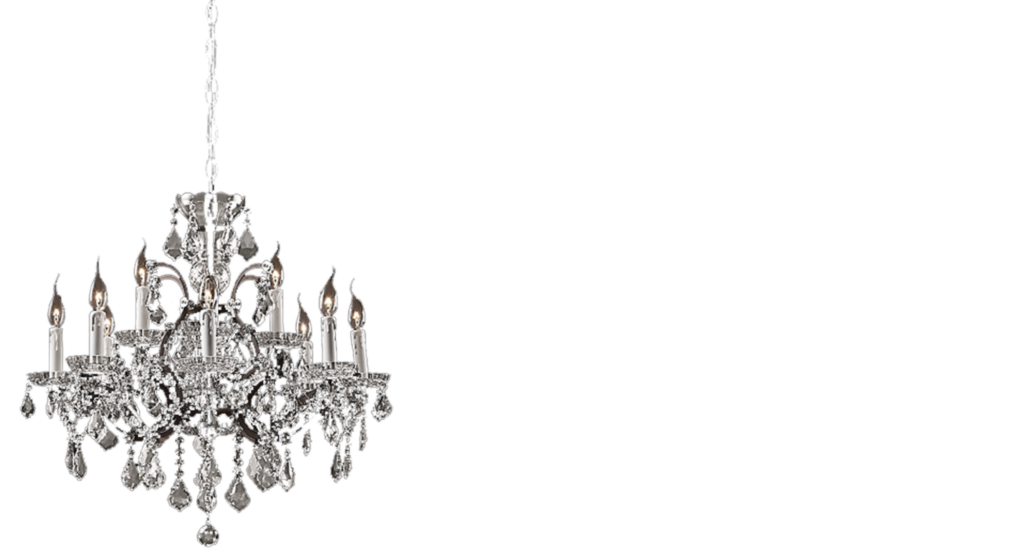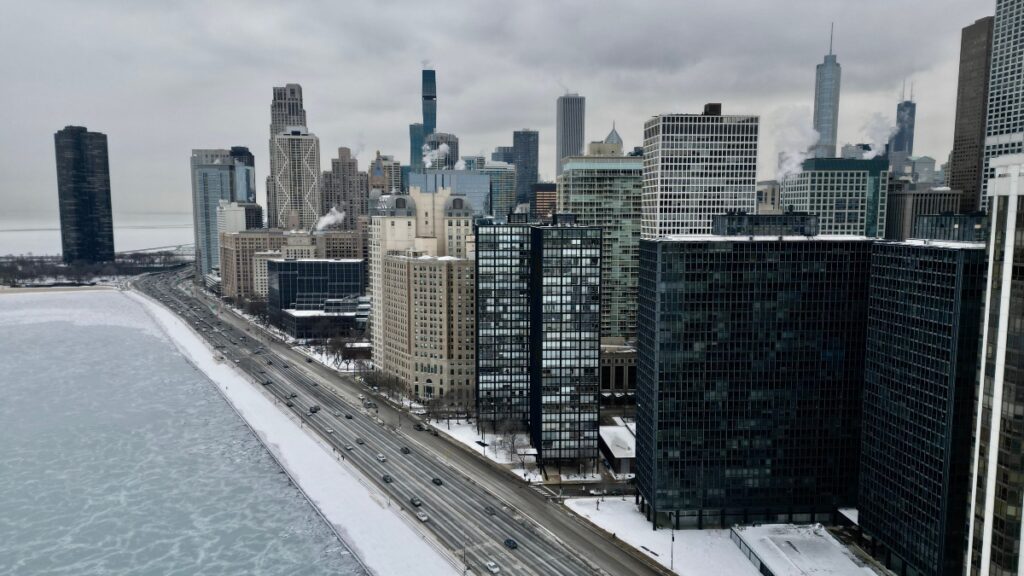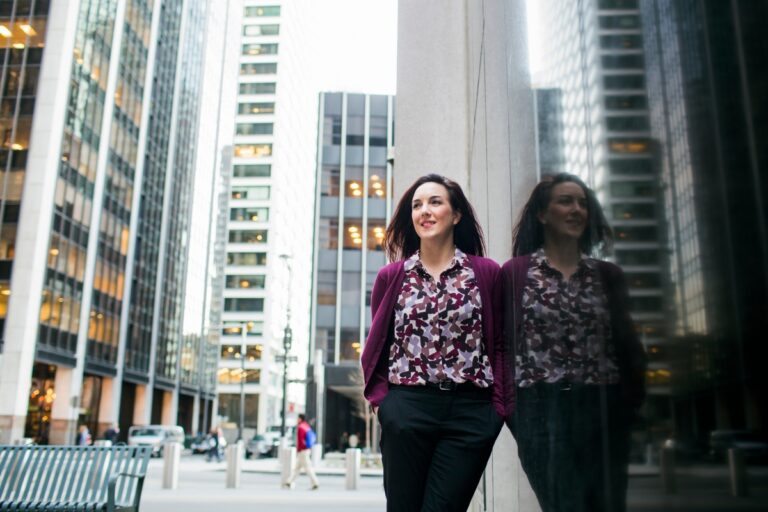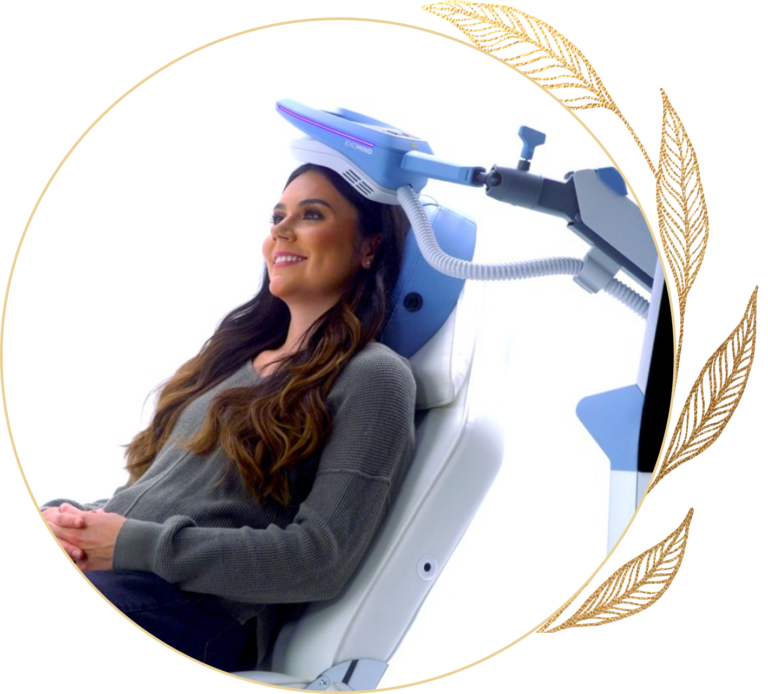Key Takeaways
- Seasonal Affective Disorder (SAD) is a type of depression that follows a seasonal pattern, most commonly emerging during the late fall and winter months due to reduced sunlight exposure. It affects mood, sleep, energy, and overall mental health.
- Why is SAD more common in Chicago? Chicago’s long, dark winters, with short daylight hours and extreme cold weather, heighten the risk of seasonal depression. Reduced exposure to sunlight in northern cities like Chicago impacts both mood and vitamin D levels.
- Common SAD symptoms include fatigue, oversleeping, carbohydrate cravings, social withdrawal, weight gain, and feelings of hopelessness. These symptoms differ from typical winter blues in severity and duration.
- Effective treatment options include light therapy, vitamin D supplementation, cognitive behavioral therapy, antidepressants, and TMS therapy for more severe cases. Early intervention in the fall may help reduce the intensity of symptoms.
- Lifestyle adjustments—like staying physically active, creating light-rich indoor environments, and maintaining social connections—can support emotional well-being during the winter months and reduce the impact of seasonal affective disorder.
Understanding SAD: Seasonal Affective Disorder in Chicago
Seasonal Affective Disorder (SAD) is a form of depression that follows a seasonal pattern, most commonly emerging during the late fall and winter months when daylight hours are shortest. For many living in Chicago, SAD can feel like more than just the “winter blues”—it’s a serious mental health condition that can disrupt daily life, impact sleep patterns, and lead to feelings of hopelessness, social withdrawal, and low energy. This type of depression is linked to changes in the body’s internal clock (circadian rhythm), which is influenced by natural sunlight exposure and shifts with the time of year.
What Is Seasonal Affective Disorder (SAD)?
Seasonal Affective Disorder (SAD) is a type of depression that typically occurs during specific times of the year—most often in the late fall and winter months—and is closely tied to reduced exposure to natural sunlight. This lack of light can disrupt the body’s circadian rhythm, lower serotonin levels, and increase melatonin production, all of which contribute to sad symptoms like low energy, loss of interest, difficulty concentrating, and feelings of depression. Unlike general depression, SAD follows a distinct seasonal pattern, making it more prevalent in northern regions like Chicago, where daylight hours are especially limited during the winter.
Why SAD Is Common in Chicago During Winter
SAD is particularly common in Chicago due to the region’s harsh, overcast winters and limited sunlight exposure during the winter months. As one of the northernmost major cities in the U.S., Chicago experiences drastically shorter daylight hours in the late fall and winter, which can significantly disrupt the body’s internal clock. This disruption affects the production of melatonin and serotonin—key hormones that regulate sleep patterns, mood, and energy levels—leading to a spike in seasonal depression and other SAD symptoms.
In addition to the physical effects of light deprivation, the intense cold and snow often discourage physical activity, social interaction, and outdoor wellness routines, all of which are vital to maintaining mental health. For many residents, the Chicago winter becomes a time of social withdrawal, low energy, and cravings for unhealthy foods, which only compound the emotional toll. The city’s seasonal climate makes it a hotspot for seasonal affective disorder, requiring intentional strategies and mental health care to prevent and treat this form of depression.
Symptoms of Winter Depression to Watch For
Winter depression, also known as Seasonal Affective Disorder (SAD), can impact many areas of your life, especially during the Chicago winter when natural sunlight is scarce. Recognizing the symptoms of SAD is the first step toward getting help. Here are common signs to watch for:
- Persistent feelings of depression or hopelessness
- Low energy and fatigue despite adequate rest
- Increased need for sleep or oversleeping
- Changes in appetite, especially cravings for carbohydrates
- Weight gain due to altered eating habits
- Difficulty concentrating on daily tasks
- Loss of interest in activities you once enjoyed
- Social withdrawal or avoiding contact with others
- Feeling sluggish or physically heavy
- Thoughts of death or suicide (seek help immediately if present)
If you notice these symptoms following a seasonal pattern, especially during the winter months, it may be time to consult a psychiatry or behavioral health professional. At Luxury Psychiatry Clinic in Chicago, we’re here to help.
How Chicago Winters Can Trigger Seasonal Depression
The dark, freezing winters in Chicago aren’t just uncomfortable—they can be a major trigger for seasonal affective disorder (SAD). For many people, the seasonal pattern of shorter days, longer nights, and biting cold leads to changes in sleep patterns, energy levels, and overall mental health. Unlike the occasional slump known as the winter blues, seasonal depression can significantly impair daily life and requires clinical attention. Understanding how Chicago winters specifically contribute to SAD can help you recognize the signs and seek proper treatment.
Shorter Days and Lack of Sunlight in the Midwest
In Illinois, and particularly in Chicago, the winter months bring extremely short daylight hours—sometimes less than 9 hours of natural sunlight per day. This lack of light disrupts the body’s circadian rhythm, which regulates sleep patterns and mood. Reduced sunlight also lowers vitamin D levels and serotonin production, while increasing melatonin, leading to low energy, oversleeping, and feelings of hopelessness. This combination sets the stage for winter depression to take hold.
Cold Weather, Isolation, and Mood Decline
As temperatures drop, people naturally spend less time outdoors, reducing their physical activity and social interactions—both of which are essential for maintaining emotional well-being. The result is often increased social withdrawal, loss of interest, and a sedentary lifestyle that intensifies SAD symptoms. In Chicago, where frigid weather and snowstorms can stretch on for months, this sense of isolation can contribute significantly to the onset and severity of seasonal affective disorder.
SAD vs. General Winter Blues: What’s the Difference?
While many people experience a drop in mood during the seasons change, SAD is a clinical form of depression that goes beyond mild winter fatigue. The winter blues might make you feel a bit tired or less motivated, but they don’t typically interfere with your ability to function. SAD, on the other hand, can cause severe sad symptoms such as difficulty concentrating, weight gain, and even thoughts of suicide. It’s important to recognize when your mood shift has crossed into something more serious—and to reach out to a mental health provider if it has.
Local Treatment Options for SAD in Chicago
Treating seasonal affective disorder (SAD) effectively requires a multifaceted approach that addresses both the biological and emotional roots of the condition. In Chicago, where winter depression is especially common, a variety of behavioral health treatments are available to help restore your mental health and well-being. Whether you’re seeking simple self-care strategies or advanced clinical support, here are some of the most effective options.
Light Therapy, Vitamin D, and Natural Remedies
One of the most common first-line treatments for SAD is light therapy, which involves exposure to a specially designed light box that mimics bright light similar to natural sunlight. This can help regulate your circadian rhythm, reduce melatonin overproduction, and improve serotonin levels. Alongside light therapy, many patients benefit from vitamin D supplements to correct deficiencies caused by limited sunlight exposure during the Chicago winter. Other helpful natural remedies include regular physical activity, a balanced diet, and establishing a consistent sleep routine.
Therapy and Psychiatry for Seasonal Depression
For many individuals, managing seasonal depression requires more than light or lifestyle changes. Psychotherapy, especially cognitive behavioral therapy (CBT), is highly effective for treating SAD symptoms such as feelings of hopelessness, difficulty concentrating, and social withdrawal. In some cases, antidepressants may also be prescribed to support neurotransmitter balance during the seasonal pattern of mood decline. At the end of the day, working with a qualified psychiatry provider—such as those at Luxury Psychiatry Clinic in Chicago—ensures that treatment is personalized to your needs.
Advanced Options Like TMS for Treatment-Resistant SAD
For those who don’t respond well to traditional approaches, advanced therapies such as Transcranial Magnetic Stimulation (TMS) offer new hope. TMS is a non-invasive, FDA-approved procedure that uses targeted magnetic pulses to stimulate brain regions involved in mood regulation. It has shown promise for treatment-resistant depression, including seasonal affective disorder. This option is especially valuable for patients looking to avoid medication or who have experienced limited success with antidepressants. Luxury Psychiatry Clinic offers TMS therapy in person at our Chicago office, providing cutting-edge care right in your neighborhood.
Coping Tips for Winter Depression in Chicago
Living through a Chicago winter with seasonal depression can be incredibly challenging—but with the right tools and habits, it’s possible to ease the impact of SAD symptoms and protect your mental health. By incorporating daily self-care, engaging in physical activity, and making small but meaningful lifestyle changes, you can support your well-being even when the skies are gray and the temperatures drop. Below are some practical ways to cope with winter depression, especially during those long, dark months in Illinois.
How to Stay Active and Social During Cold Months
Staying active and socially engaged can make a big difference in reducing feelings of hopelessness, social withdrawal, and low energy—hallmarks of seasonal affective disorder. Here are some strategies that work well during the winter months:
- Join a local gym or indoor fitness class to maintain regular physical activity
- Plan weekly meetups with friends or family to stay connected
- Try winter-friendly hobbies like yoga, indoor cycling, or dance
- Take brisk walks during daylight hours to soak in what little natural sunlight is available
- Volunteer locally to find purpose and build community
- Set achievable goals to keep your mind engaged and motivated
Creating a Light-Filled, Mood-Friendly Indoor Space
Your environment plays a key role in managing SAD symptoms, especially in a place like Chicago where daylight hours are scarce. Open curtains and blinds to let in as much natural sunlight as possible, and consider using a light box in the morning to simulate bright light exposure. Choose warm, uplifting décor and keep your living area tidy to promote mental clarity. Aromatherapy, calming music, and cozy textures can also help create a soothing space that supports your well-being throughout the season.
When to Seek Professional Help
If your feelings of depression, low energy, or loss of interest persist and begin interfering with your daily life, it may be time to seek help from a mental health professional. Warning signs include worsening mood, persistent difficulty concentrating, or thoughts of suicide. Psychotherapy, psychiatry, and advanced treatments like TMS are available to help you find relief. At Luxury Psychiatry Clinic, we offer expert, compassionate care tailored to your unique needs—because no one should have to face seasonal affective disorder alone.
SAD Treatment at Luxury Psychiatry Clinic in West Loop
At Luxury Psychiatry Clinic, located in the heart of West Loop Chicago, we understand the profound impact that seasonal affective disorder (SAD) can have on your life—especially during the long, gray Chicago winter. Our expert team offers a warm, compassionate environment where you’ll receive evidence-based care that’s tailored to your unique symptoms, lifestyle, and treatment goals. Whether you’re battling low energy, social withdrawal, or severe feelings of depression, we’re here to support your journey toward lasting well-being.
Our Personalized Treatment Approach for Seasonal Depression
We don’t believe in one-size-fits-all care. Our clinicians take a comprehensive view of seasonal depression, addressing biological, emotional, and lifestyle factors through a personalized treatment plan. This may include light therapy, vitamin D supplementation, cognitive behavioral therapy, antidepressants, or TMS therapy for more severe or treatment-resistant SAD. Every patient is thoroughly evaluated to determine the most effective interventions, ensuring each aspect of your care aligns with your needs and goals.
In-Person and Virtual Psychiatry Options in Chicago
To make treatment as accessible as possible, we offer both in-person appointments at our West Loop office and virtual psychiatry sessions for patients throughout Chicago and Illinois. Whether you prefer to discuss your care from the comfort of your home or meet face-to-face with a specialist, our flexible options allow you to receive consistent support—especially during the winter months, when timely care is essential. At Luxury Psychiatry Clinic, your mental health always comes first.
Supporting Your Mental Health Year-Round
SAD may follow a seasonal pattern, but your care shouldn’t be seasonal. Our clinic is committed to supporting your mental health throughout the entire year. From preventative care in the fall to ongoing maintenance during winter and beyond, we help patients manage SAD symptoms, adjust treatment as seasons change, and cultivate sustainable wellness strategies. With Luxury Psychiatry Clinic, you have a trusted partner in your long-term behavioral health and emotional resilience.
FAQ: Seasonal Affective Disorder in Chicago
In Illinois, seasonal affective disorder (SAD) typically begins in the late fall, as daylight hours decrease, and symptoms often last through the winter months, gradually improving in the spring. Many people in Chicago start to feel the effects as early as November, with peak severity in January and February.
Yes, SAD is more common in northern cities like Chicago, where natural sunlight is limited during the winter. The combination of shorter days, overcast skies, and extended cold weather significantly increases the risk of developing seasonal depression compared to sunnier, southern regions.
Absolutely. Taking proactive steps—like starting light therapy, maintaining a balanced diet, and monitoring vitamin D levels—before the seasonal pattern begins can reduce the intensity or even prevent the onset of SAD symptoms. At Luxury Psychiatry Clinic, we help patients plan ahead so they can manage symptoms before they disrupt daily life.
